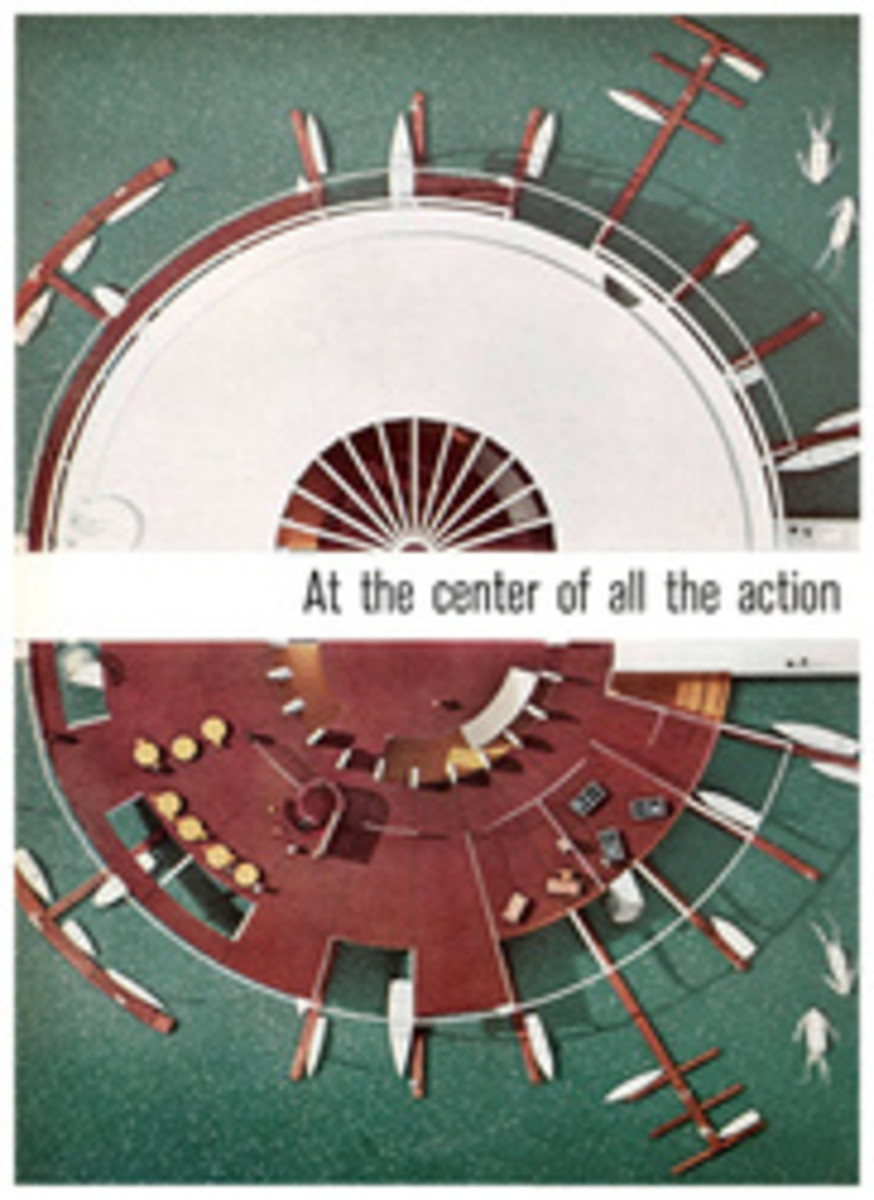
The flying lady of the Flying Dutchman
This week some 372 skillful North Americans, the largest U.S. sports squad ever assembled for a foreign event, are competing in S√£o Paulo, Brazil against athletes from 23 other Western Hemisphere nations in the fourth Pan American Games. Not the least among them is a blue-eyed blonde who mixes championship competition with the housewifely chores incident to bringing up two children and catering to a husband in Delray Beach, Fla.
With that same husband serving as crew, and the children in the charge of a baby-sitter at home, Pat Duane, 32, will skipper a trapeze-rigged Flying Dutchman class sailboat against the best sailors in the entire hemisphere. As it happens, she is the first woman from any country ever to skipper a boat in the Pan American Games, and if she sails true to previous form, the men from Brazil, from Canada, and from all the other nations will end up securely in her wake.
The unchivalrous fact is that men have been trying to beat Pat for years—ever since, at age 11, she swung down out of a maple tree in her Long Island backyard, hoisted a bedspread on an oar fastened to a rowboat and ventured forth on Manhasset Bay to accept the challenge of the local boys. "They seldom won," she says now. In one of her scrap-books, alongside a press clipping telling of an early victory, Pat, then 17, wrote: "I later discovered that Teddy and Tommy had teamed up to beat me—but to no avail!" Another entry reveals that the boy next door, who crewed for her, was "unenthusiastic." "I had to get rid of him," Pat explains gravely today.
In general, this attitude proved reciprocal until Pat ran into a brash and handsome young Colgate man named Jack Duane in 1950. He met her on a blind date at Mt. Holyoke College when Pat was a sophomore, bought her a beer and made his first mistake. He bragged about his sailing. "I'd sailed across a lake once when I was at camp," he explains now. "I sort of embellished the crossing." Pat listened, then told him, "How interesting. I sail, too." Two years later she married him in an Army chapel in Hawaii, where Jack was stationed, and began teaching him to sail in earnest. "He learned real quickly," Pat says sincerely. Jack smiles grimly. "If I didn't," he says, "I wouldn't be here now."
In April of '53, with Jack a civilian and a brief, comical stint of ocean racing behind them ("What in hell am I doing here?" Jack shouted in the teeth of a 48-mile-an-hour gale as water crept over the lower bunks below), the Duanes moved to Florida, and for the next three years the grumblings of masculine discontent were stilled. "There was no place to sail," Pat explains. But on Labor Day 1956, Pat won a Moth class regatta with three consecutive firsts, and the men were on the run again.
Pat won nine of her next 10 races and went into the Sunshine Regatta for the Moth class in Miami, with the masculine rumblings sounding like guns of war. The 136-boat field included three International and two North American champions, but when the last boat had crossed the finish line, Pat Duane was tied on points with Don Lapp, then world Moth champion. Under Moth rules, the title was hers because she had beaten Lapp in two of the three races. But the members of the race committee would not hear of it. They applied the Snipe class scoring system, a complicated piece of arithmetical squares which, in this case, was as irrelevant as a football rule book. Pat lost by eight points. "I was a little miffed," her sympathetic husband says now with understatement.
The following October, Pat won the world Moth championship and went on to win the regatta she had lost on scoring the year before. Then, in 1958, she abandoned her 11-foot Moth for a 20-foot Flying Dutchman, and her husband, accepting the inevitable, signed on as crew.
That summer, in the Long Island Sound FD championships, they took a second. In Red Bank, N.J. they finished fourth. And in St. Michaels, Md., at the Flying Dutchman North Americans, they took a sixth. "That was the one we felt good about," says Pat. "Two Olympians beat us, and the other three were pretty close to Olympic caliber. Our sails were awful; we hardly knew the boat. But we got to thinking maybe we had a future in it."
A year later, in the North American championships, they won the first race, then crossed the line early for the second and had to go back. Halfway up the weather leg, the jib blew out, and Jack discovered what it meant to be the husband of a competitive star, a sailor who would be the official women's champion of North America the next year. "I quit," he said, and threw down his glove. "All 43 boats have gone around the mark."
"We're not quitting," his skipper replied. Jack put the glove back on again and ran the jib up on the spinnaker halyard.
"All of a sudden," he relates now, "the slot opened up, and we started to fly. We passed 36 boats." And by the end of the series, Pat had come from behind to win the North American FD title by 5¾ points—a considerable margin for such high-level competition.
By March of last year Pat's collection of sailing titles and the reputation that grew with it had preceded her to the World Flying Dutchman Week Regatta, and both were the talk of Europeans gathered for the event in St. Petersburg, Fla. "In Europe," Jack explains, "women don't compete in sailing; they stand on the shore and have dinner ready. European sailors couldn't believe an American girl could be that good. The Italians, the Dutch, the French, the Russians—they'd come down to look at our boat, talking their own language. And then they would point to Pat and I'd hear 'la donna,' 'la femme,' 'zhenshchina.' "
When Pat won the regatta, a sturdy Dutchman looked sadly at the empty boat of his nation's representative, then walked to the side of the American boat and murmured reverently, "I never believed a woman could beat Verhagen."
Pat Duane won the right to represent the U.S. in S√£o Paulo in characteristic fashion: by beating a man who thought he had won. A Canadian took the North American championship last August, but Pat and Arthur Lange, New Jersey's fine Jet 14 sailor, were the highest placed Americans, perilously close in score. Whoever got most points would go to S√£o Paulo. As the last race began, Lange got out in front and stayed there in fluky, shifting winds. Pat had to pass four boats to make a point total great enough to beat him. "We were 12th around the mark into the downwind leg to the finish," Jack says. "The air was light as air. Pat broke out a ¾-ounce zephyr spinnaker. Lange was watching from the yacht club dock. He couldn't stand it. He went back inside. Pat was steering with her knees, pumping the spinnaker with her hands on the sheet and guy."
"Don't reach for the cigarettes," Pat told her crew sharply as he started to upset the balance. They passed a boat.
"Keep the chute full," Pat shouted. "Don't let the spinnaker break!" They passed another.
"Don't move your head," she whispered. Jack became rigid. Silently they eased by a third.
Two hundred feet from the finish line, with Pat working the sheet and guy as if they were threads of a cobweb, they slid past the fourth boat. Pat was off to S√£o Paulo.
"It was up to her," Jack Duane says of his wife's triumph. "I couldn't do anything. I just sat there."
PHOTO
READY FOR FAIR WEATHER OR FOUL, SKIPPER DUANE RIGS HER BOAT FOR RACING

